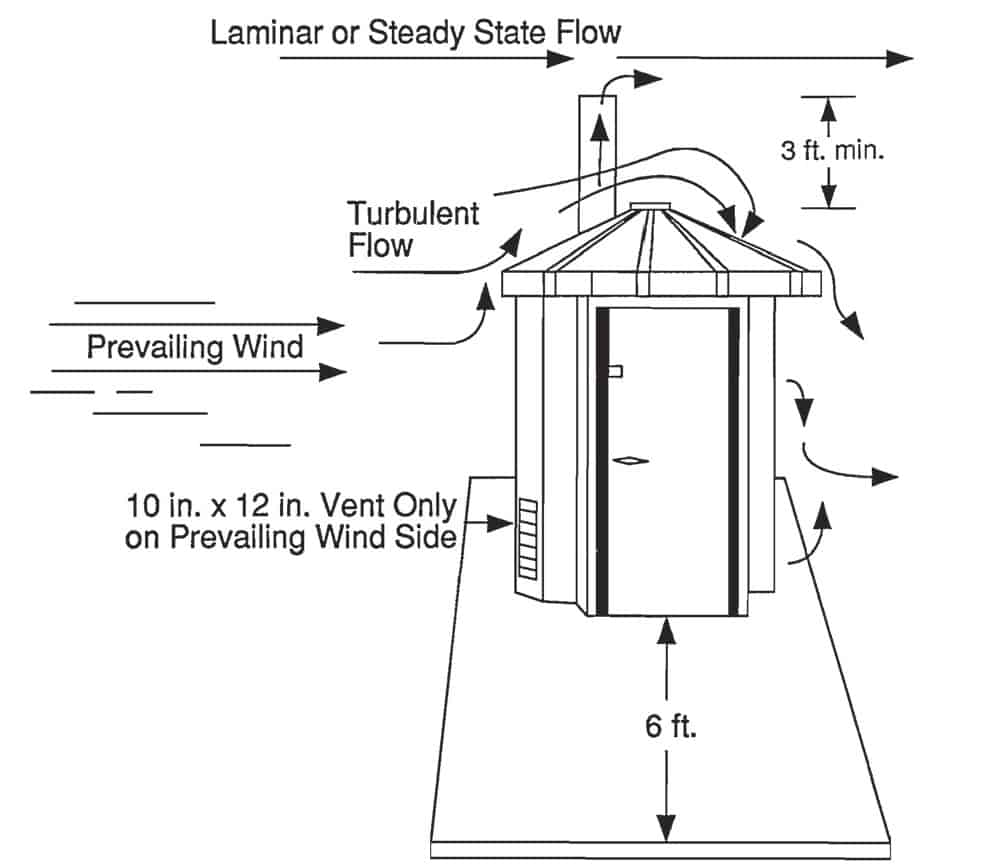
All of Romtec’s waterless restrooms are called the SST models because each model includes Romtec’s Sweet Smelling Technology. In the days before Sweet Smelling Technology, waterless restrooms were called outhouses, and ventilation was inadequate for comfortable use. Romtec created a different way to ventilate waterless restrooms that drastically reduced the presence of odors in these facilities.
The trouble with designing ventilation for waterless facilities is that these units are typically not connected to power. Instead of using fans, waterless restrooms must rely on forces of nature to move odors away from the structure. Waterless restrooms are also called “vault toilets” because they use below-grade holding tanks or vaults to store waste. Naturally, vaults amass odors that permeate outside of the vault. Unfortunately, the only previous escape for gasses was back through the toilet and into the restroom.
Louvered Vents for Airflow
One of the first methods of dispersing gas build up in the restrooms was to use louvered vents to allow natural airflows to carry away odors. Another option was to include grates or screens high on the restroom walls to do that same thing. The reason that these features were chosen over windows was to preserve the privacy of the restroom.
Vent Pipe for Gasses
Another method for reducing gas buildup was to locate a vent pipe straight into the vault and vent the gasses to the outside of the facility. This eliminated any privacy concerns and also helped reduce odors in the restroom. Both solutions helped reduce the buildup of odor, but they did not eliminate the problem, which was that odor can permeate back through the toilet.
Sweet Smelling Technology used both of these practices combined with natural science to create a system that prevents the majority of odors from moving back into the restroom. The vent pipe created an exit for any odors, but the difficulty was forcing the odors out through the vent without power. Surprisingly, the answer was simple and already in use.
Air Pressure Flow for Increased Ventilation
Wind and moving air creates pressure. Placing vents in restroom walls allows air to move into the building, raising the air pressure. This basic premise provided a way to force air from high pressure inside the building to low pressure outside the building. In order to maximize this condition, knowledge of the installation site is crucial to understand the prevailing winds and orienting the restroom to capture more air pressure. Better air pressure from prevailing winds increases the efficiency with which an SST waterless restroom ventilates itself.
This solution by Romtec has proven to be extremely effective for decades. It is not only beneficial in terms of its simplicity and its effectiveness, but it is also very cost-beneficial. Certainly there are days with little to no wind that limit the effectiveness of SST ventilation, but without providing power to the site or engineering specialized wind tunnels, this solution is extremely effective.
To view Romtec’s complete line of waterless restrooms, click here.
To get a price estimate on a waterless restroom, click here.
Or, simply feel free to contact us with any questions you might have.
